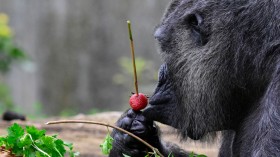The Earth could be hit by an asteroid someday, and the danger is real, scientists said.
To prevent the likelihood of a catastrophe, scientists are holding the Asteroid Day on June 30. This campaign aims to provide information about the asteroid threat and to impart knowledge about the many solutions within reach.
"Our goal with Asteroid Day is to dedicate one day each year to learn about asteroids, the origins of our universe, and to support the resources necessary to see, track and deflect dangerous asteroids from Earth's orbital path," Brian May, guitarist of the band Queen, astrophysicist and co-founder of Asteroid Day, said in a news release.
The campaign will be supported by museums and science centers worldwide, and will show video presentations and hold activities that will raise awareness about asteroids.
"This year we really got some solid support from the space agencies. NASA and everyone is on board. We're doing more than ever before," Grigorij Richters, co-founder of Asteroid Day, told CNN.
Asteroid Day falls on the anniversary of the Tunguska event in 1908 when an asteroid struck the Podkamennaya Tunguska River in a forest in Siberia, Russia.
The impact was so powerful that even people more than 40 miles away were thrown from their chairs.
According to Asteroid Day's website, more than a million asteroids are threatening to hit Earth, but in spite of technological advances, scientists have only discovered one percent of these deadly space rocks.
The organization also launched the 100X Declaration, which urges scientists to increase their asteroid discovery rate 100,000 times within the next 10 years.
"The more we learn about asteroid impacts, the clearer it became that the human race has been living on borrowed time," May said on the website.
According to Geekwire, scientists estimate that asteroids may collide with Earth once or twice in 100 years on average. Many of the impacts are likely to occur in remote places, such as what happened in the Tunguska event.
However, experts say it's only a matter of time before a near-Earth object hits a populated area.
NASA is currently monitoring impact risks with its Near-Earth Object Program. The spacecraft NEOWISE (Near-Earth Object Wide-Field Survey Explorer) is tracking asteroids and comets that could hit the planet.
According to the NASA program, there are no big asteroids that are threatening to hit Earth so far.
© 2024 NatureWorldNews.com All rights reserved. Do not reproduce without permission.

![Great White Sharks Observed for the First Time Changing Their Behavior in Different Marine Environments [Study]](https://1471793142.rsc.cdn77.org/data/thumbs/full/70251/280/157/50/40/great-white-sharks-observed-for-the-first-time-changing-their-behavior-in-different-marine-environments-study.jpg)

![Origin of Life: Discovery of Lava Being a Building Block of Life Hints 'Humans Have Volcanic Origins' [Study]](https://1471793142.rsc.cdn77.org/data/thumbs/full/70262/280/157/50/40/origin-of-life-discovery-of-lava-being-a-building-block-of-life-hints-humans-have-volcanic-origins-study.jpg)

